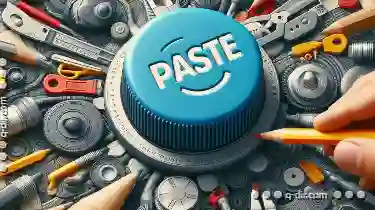One such task that is commonly performed in various software applications is the action of cutting. While traditional methods often involve manual ...
 deletion followed by a new location for pasting, advancements in artificial intelligence (AI) have introduced novel ways to handle this operation. This blog post will explore the future trajectory of "cutting" actions within digital environments, focusing on whether AI-driven deletion or human oversight should prevail. In today's rapidly evolving digital landscape, the way we interact with files and folders has become increasingly automated.
deletion followed by a new location for pasting, advancements in artificial intelligence (AI) have introduced novel ways to handle this operation. This blog post will explore the future trajectory of "cutting" actions within digital environments, focusing on whether AI-driven deletion or human oversight should prevail. In today's rapidly evolving digital landscape, the way we interact with files and folders has become increasingly automated.1. The Evolution of Cutting Actions
2. The Role of AI in File Management
3. Advantages of AI-Driven Deletion
4. Drawbacks of AI-Driven Deletion
5. Balancing Automation with Human Oversight
6. The Future of Cutting: Insights into Trends
7. Conclusion: Finding Your Optimal Balance
1.) The Evolution of Cutting Actions
The concept of cutting has been around since the early days of computing when graphical user interfaces (GUIs) were introduced. Initially, this action was purely manual, requiring users to select files and folders, right-click to trigger a menu, choose "cut," then navigate to the desired location for pasting. This process was straightforward but time-consuming, especially in bulk operations or with large datasets.
2.) The Role of AI in File Management
AI has begun to play an increasingly significant role in file management applications. Machine learning algorithms can analyze patterns and user behavior to predict which files might be needed in the future based on past interactions. This predictive capability allows AI systems to automate tasks such as identifying redundant or rarely used files, suggesting potential deletions that could free up space without impacting active projects significantly.
3.) Advantages of AI-Driven Deletion
A. Efficiency
AI can handle large volumes of data much faster than humans, allowing for more extensive and frequent operations within a shorter time frame. This efficiency is crucial in environments where storage capacity is at a premium or when swift action is necessary to clear space for new files.
B. Accuracy
Machine learning models are designed to be consistent and unbiased, reducing the likelihood of human error that can occur with manual deletion processes. This consistency ensures that only unnecessary files are removed, preserving important data unless explicitly directed by the user.
4.) Drawbacks of AI-Driven Deletion
A. Lack of Contextual Understanding
While AI excels in certain aspects, it may struggle to understand the nuanced value or potential future use of a file based on its context within an active project or creative workflow. This lack of contextual understanding can lead to unintended deletions that might hamper ongoing work.
B. Trust and Control
Some users feel uneasy about handing over control of their data to AI, preferring instead to have direct oversight and management of files through manual processes. The absence of a human element in the decision-making process can undermine user trust and satisfaction.
5.) Balancing Automation with Human Oversight
A middle ground that is gaining traction involves a hybrid model where AI assists humans in decision-making but leaves final approval to users. For instance, an AI might suggest potential deletions based on patterns observed from the user's history, and the user can then review and confirm these suggestions or override them based on specific needs or personal preferences.
6.) The Future of Cutting: Insights into Trends
As we move forward, it seems likely that tools will become even more sophisticated yet remain flexible enough to accommodate different user preferences. Augmented intelligence might be the next frontier, where AI provides suggestions and explanations for its actions, enhancing transparency and empowering users to make informed decisions about their data.
7.) Conclusion: Finding Your Optimal Balance
The future of cutting in digital environments is likely to see a continued integration of AI with human oversight. While AI can significantly enhance efficiency and accuracy, the unique needs and sensitivities associated with specific projects or types of content argue for some level of user control. By embracing both automated suggestions and manual decision-making, users can benefit from streamlined processes without compromising on their ability to manage important files effectively.
In conclusion, as technology advances, it's crucial not to lose sight of the importance of flexibility and control in managing personal digital assets. The optimal approach may well involve a collaborative effort between humans and AI, each contributing their unique strengths to create an environment where both efficiency and user satisfaction are maximized.

The Autor: / 0 2025-04-30
Read also!
Page-

File Permissions in Database Systems
This blog post will delve into the basic concepts of file management within a database system, focusing specifically on permissions. We'll break down ...read more

Details View for eBook Management: Best Columns
One of the most effective ways to manage and present a large amount of information about eBooks is through the use of detailed views in software ...read more

The "Paste" Button: Friend or Foe to Originality?
This seemingly simple action-copying content from one location and pasting it into another-is a staple of daily computing tasks. However, what many ...read more